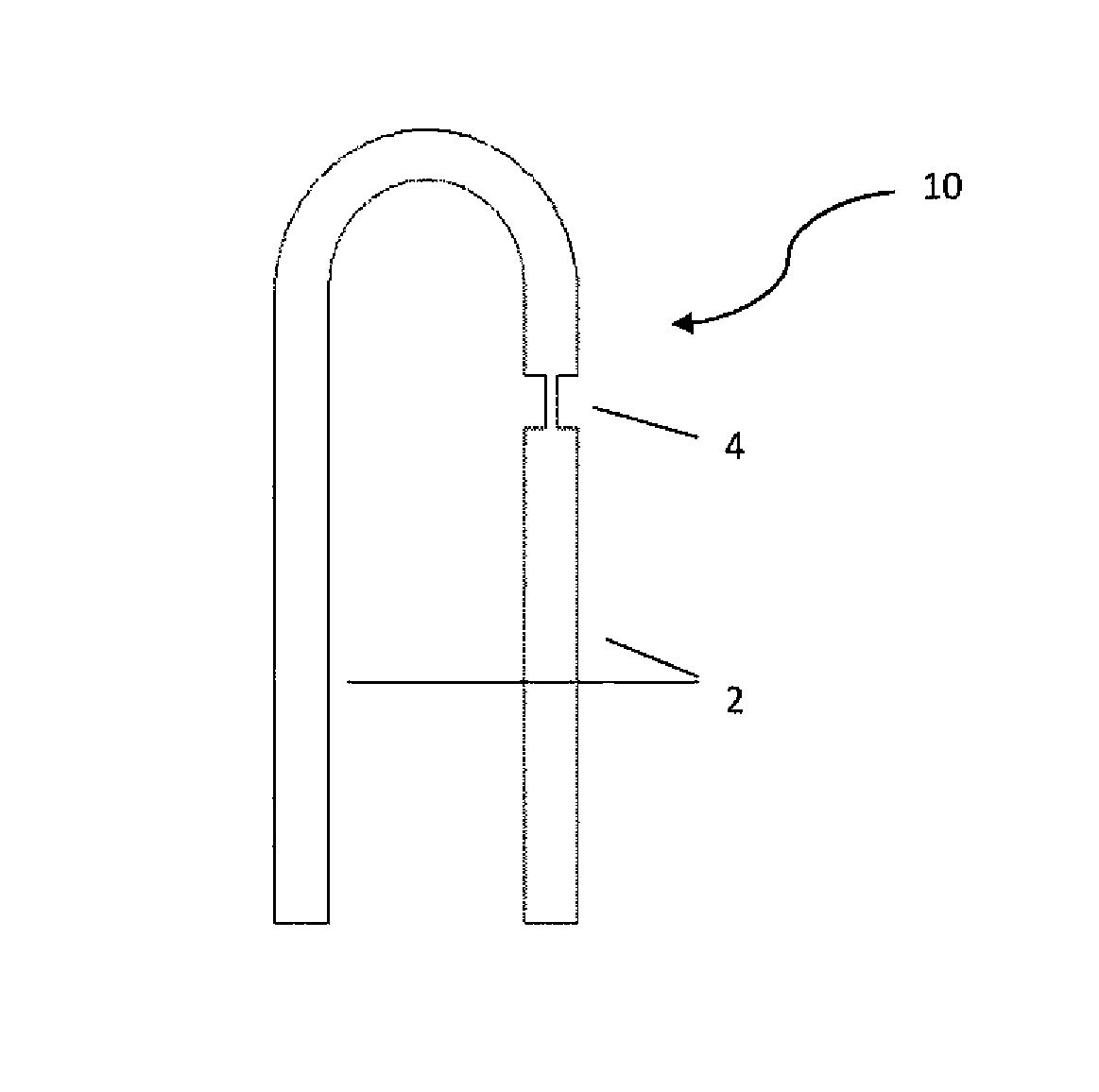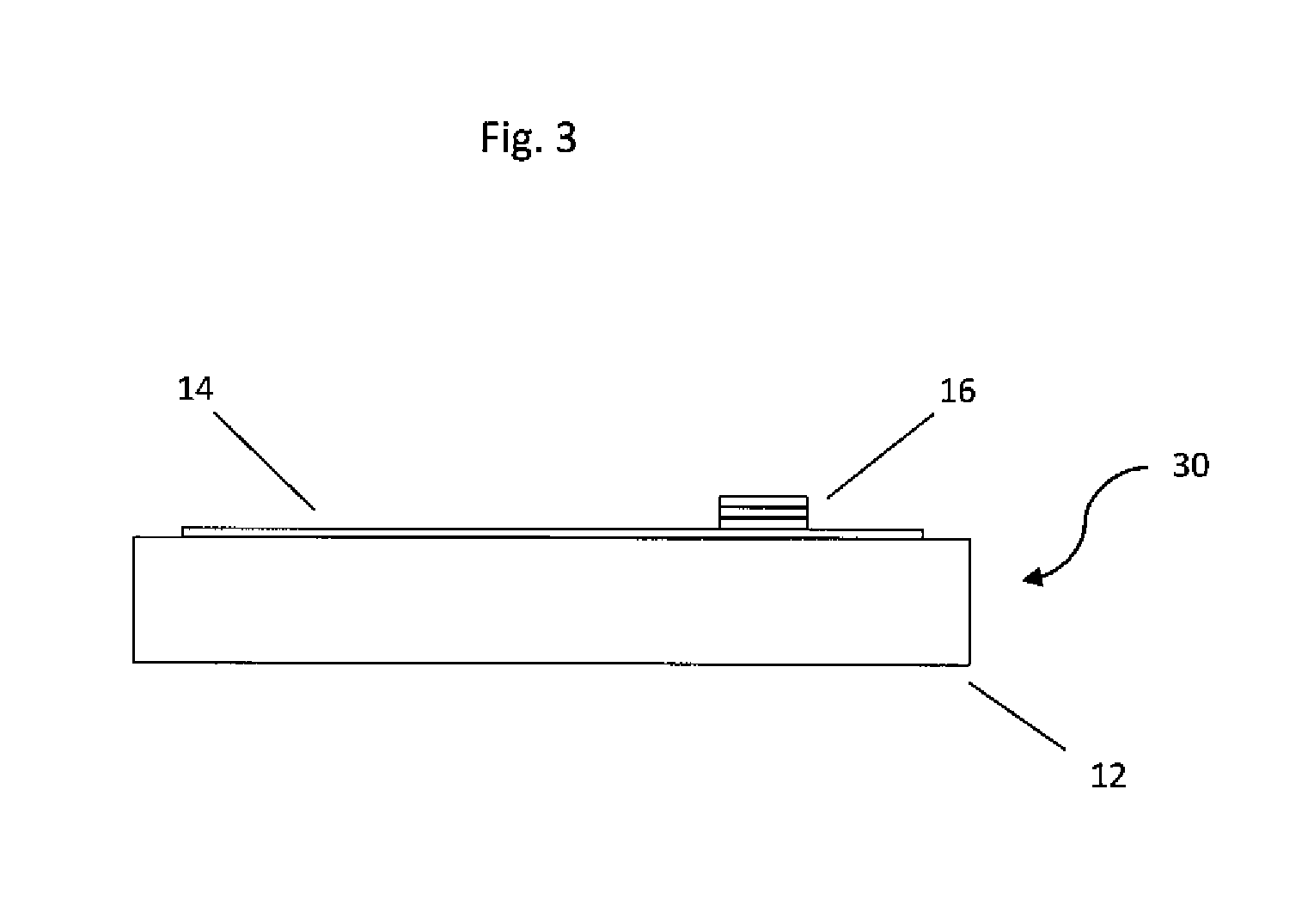Flexible detonator integrated with directly written energetics
- Summary
- Abstract
- Description
- Claims
- Application Information
AI Technical Summary
Benefits of technology
Problems solved by technology
Method used
Image
Examples
Embodiment Construction
[0019]The present invention details a method of forming a bridge wire EED detonator on a flexible substrate, the process steps being: (1) printing a nano-particle conductive ink applied, using a piezo based drop on demand ink jet printer, to provide a finely detailed bridge wire EED set of conductive lead wires and a resistive bridge wire therebetween on a substrate, which substrate may be non-flexible, i.e. flat, or, flexible; (2) drying, i.e. annealing, the printed bridge wire EED to remove the solvent from the ink and leave a sintered, fully conductive, electrical circuit; (3) applying in layers, first a primary explosive layer (e.g. such as a lead styphnate based material); next, optionally, a transition explosive material layer (e.g. such as a lead azide based material); and finally, a secondary explosive material layer (e.g. such as a CL-20, RDX, HMX, PETN, TNAZ, and the like, based material) atop the bridge wire; and (4) allow each layer to dry, prior to applying the next wet...
PUM
 Login to View More
Login to View More Abstract
Description
Claims
Application Information
 Login to View More
Login to View More - R&D
- Intellectual Property
- Life Sciences
- Materials
- Tech Scout
- Unparalleled Data Quality
- Higher Quality Content
- 60% Fewer Hallucinations
Browse by: Latest US Patents, China's latest patents, Technical Efficacy Thesaurus, Application Domain, Technology Topic, Popular Technical Reports.
© 2025 PatSnap. All rights reserved.Legal|Privacy policy|Modern Slavery Act Transparency Statement|Sitemap|About US| Contact US: help@patsnap.com



